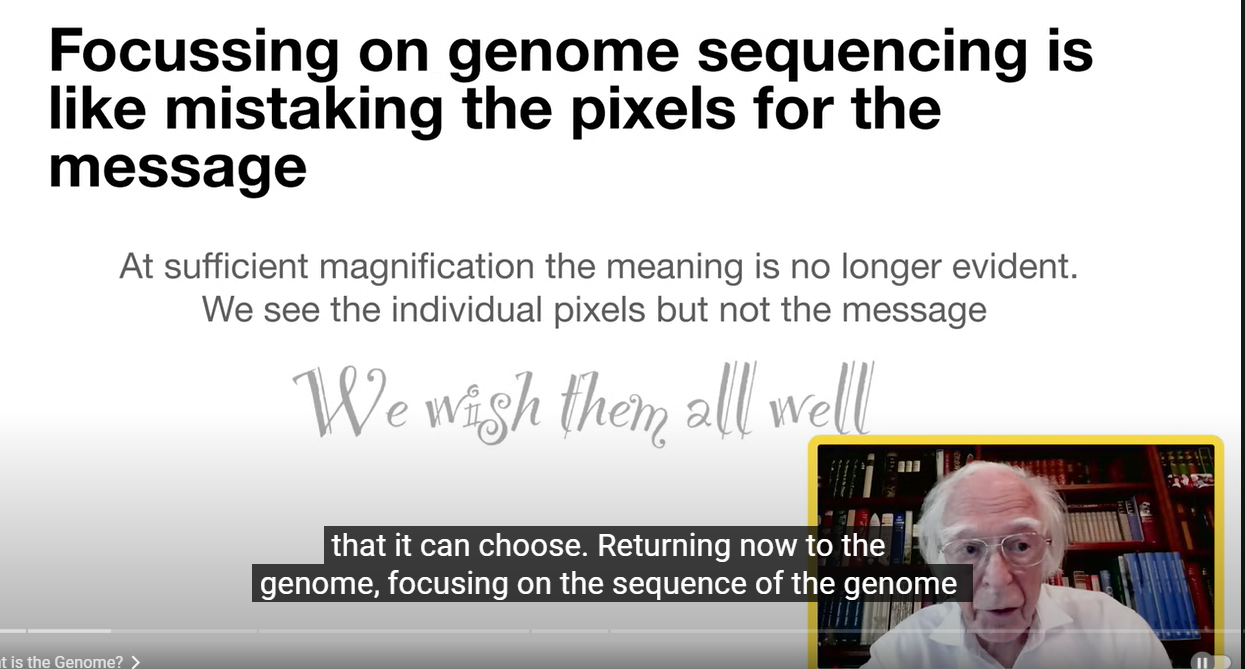The central dogma of biology has long dictated our understanding of life and evolution. However, renowned biologist Denis Noble, a fellow of the Royal Society and professor at the University of Oxford, challenges this dogma. Noble, a pioneer in systems biology, argues that the gene-centric view of biology is fundamentally flawed and that a radical overhaul of our understanding of life is necessary. This report delves into Noble’s lecture, highlighting his revolutionary ideas and their implications for biology and medicine.
Overview of the Lecture
Denis Noble’s Background
Denis Noble is a distinguished biologist known for his pioneering work in systems biology. He has spent his career challenging the traditional gene-centric view of biology and has contributed significantly to our understanding of life and evolution. Noble’s current work focuses on advocating for a paradigm shift in biology, moving away from the gene-centric model to a more holistic understanding of living systems.
Key Themes
In his lecture, Noble argues that genes are not the blueprint for life and that focusing solely on genes cannot explain the complexity of living organisms. He proposes that we need to investigate the functional networks in living organisms that control the genome and enable it to be edited.
The Genome: Not the Blueprint for Life
Understanding the Genome
The genome is a long, thin thread of molecules, called nucleotides, found in all our cells. These nucleotides, labeled A, T, G, and C, form the DNA sequence. Despite its complexity, Noble argues that the genome alone cannot account for the complexity of life.
The Role of Genes
Noble emphasizes that genes, as mere chemical structures, cannot independently create life. They act in predictable ways, binding together in pairs (A with T, and G with C), but they do not possess the ability to make choices or exhibit behaviors like selfishness or cooperation.
Membranes and Cellular Structures
One of Noble’s critical points is that the control of the genome lies in the cell’s membranes and structures, which are inherited from the mother’s egg cell. These structures, not encoded by genes, play a crucial role in regulating gene expression and cellular functions.
Challenging the Dogmas of Modern Biology
The Central Dogma of Molecular Biology
The central dogma, which states that DNA makes RNA, and RNA makes proteins, is a simple chemical fact. However, Noble argues that this does not prevent organisms from editing their DNA. The body can control its genes without needing to revert from proteins back to DNA.
The Weissman Barrier
The Weissman barrier, proposed over a century ago, suggests that reproductive cells (eggs and sperm) are isolated from the rest of the body, preventing the transmission of acquired traits. Noble refutes this by highlighting recent discoveries that show how body characteristics can be communicated to germ cells through small molecular packets.
DNA Replication
Noble points out that DNA replication is not a simple, error-free process. It requires the living cell’s machinery to correct errors and ensure accurate replication, challenging the notion that DNA can self-replicate independently.
The Relationship Between DNA and Its Vehicle
The idea that DNA is separate from its vehicle (the cell or body) is also flawed. Noble explains that DNA replication and function are deeply intertwined with the living cell’s processes, making it impossible to view DNA as an isolated replicator.
Implications for Medical Science
The Human Genome Project’s Unfulfilled Promise
The Human Genome Project promised to revolutionize medicine by identifying gene variants responsible for diseases. However, Noble argues that this promise has not been fulfilled. Genome sequencing has not reliably predicted or cured major diseases like cancer, diabetes, and heart disease.
The Need for a New Approach
Noble suggests that instead of focusing on genes, we should study the living processes in our bodies—the functional physiological networks. These networks, sensitive to environmental and social interactions, play a crucial role in health and disease.
Examples of Functional Networks
Cellular Communication
Noble describes how cells communicate from their surface to the nucleus via tubulin threads, allowing rapid transmission of information. This communication is crucial for controlling gene expression and responding to environmental changes.
Groundbreaking Studies
Noble highlights studies demonstrating how surface membrane processes can influence gene expression. These studies show that cells can quickly respond to environmental signals, challenging the notion that genes alone dictate cellular behavior.
A Challenge to the World’s Scientists
The Future of Biology
Noble challenges scientists to explore how functional tubulin pathways and other cellular structures mediate changes in gene expression and DNA. He believes that understanding these processes is crucial for advancing biology and medicine.
A Call for Creative Ingenuity
Noble emphasizes the need for a new generation of scientists to shift the cultural understanding of biology. This generation must address the challenges of the 21st century, including aging societies and environmental crises, by adopting an integrative approach to studying living organisms.
Conclusion
Denis Noble’s lecture calls for a radical rethinking of biology. By moving away from a gene-centric view and focusing on the complex functional networks in living organisms, we can better understand life and develop more effective medical treatments. Noble’s challenge to the scientific community is to embrace this new paradigm and work towards a holistic understanding of biology.
For a more in-depth exploration of these ideas, you can watch the full lecture by Professor Denis Noble








